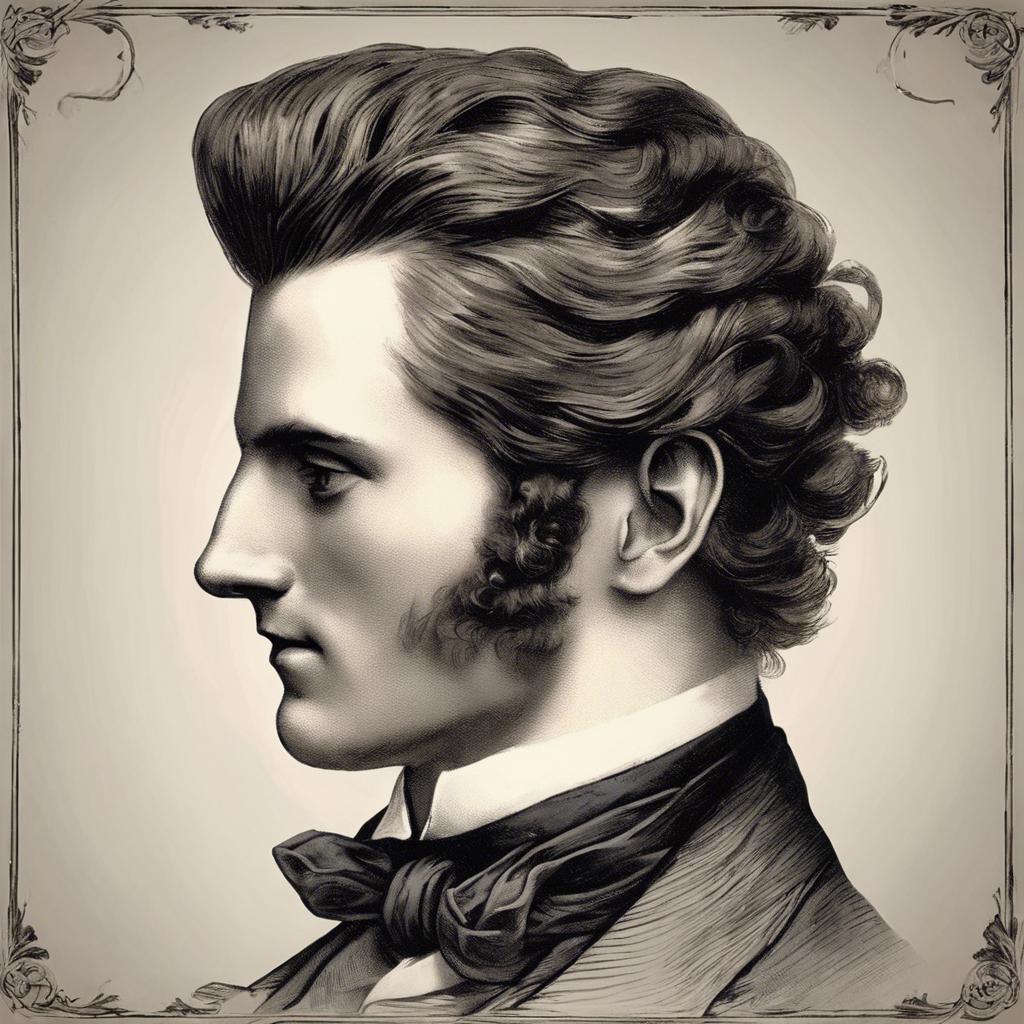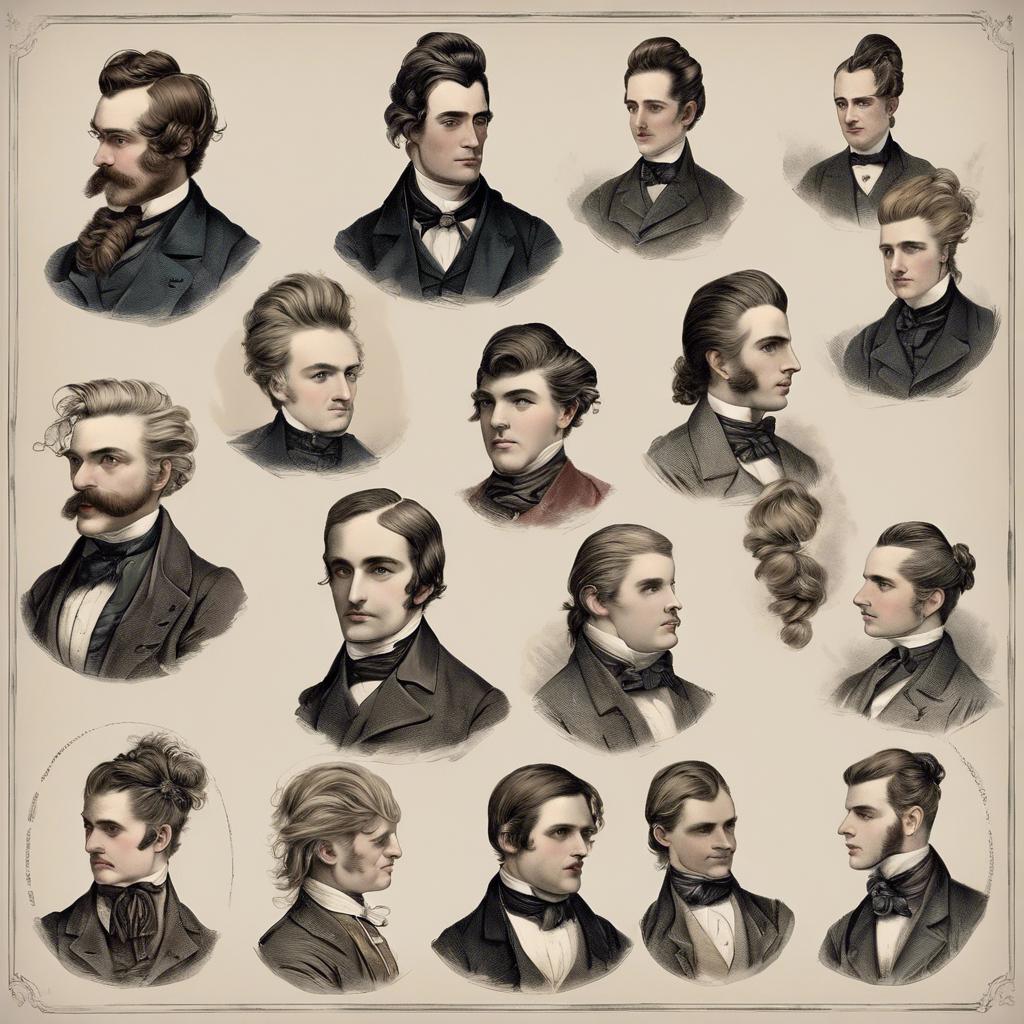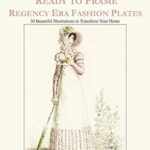In the Victorian era, men’s hairstyles in the 1800s were a reflection of both societal norms and personal grooming preferences. From the sleek sophistication of the side part to the bold statement of the pompadour, hairstyles of the time served as a defining feature of a gentleman’s appearance. Join us as we explore the evolution and intricacies of 1800s hairstyles for men, and gain insight into the cultural significance of these timeless looks.
Step Into the World of Cheryl Bolen
Dive into the enchanting stories of love, intrigue, and elegance set in the Regency Era. Cheryl Bolen's novels offer timeless romance and captivating tales that will leave you wanting more.
Explore Cheryl Bolen's Books Now
Introduction to 1800s Mens Hairstyles
In the 1800s, men’s hairstyles underwent a significant transformation, reflecting the societal norms and fashion trends of the era. From the elegant and refined looks of the early 1800s to the more elaborate and exaggerated styles of the late 1800s, men’s hair was a crucial aspect of their overall appearance.
Early 1800s Hairstyles:
- Short and Neat: Men in the early 1800s typically wore their hair short and neatly combed. The preferred style was often parted on the side and slicked down with pomade.
- Sideburns and Whiskers: Sideburns and whiskers were also popular during this time, adding a touch of masculinity to the otherwise clean-cut look.
- Top Hats: To complement their hairstyles, men often wore top hats, which were a staple accessory of the early 1800s fashion.
Mid-1800s Hairstyles:
- Center Part: As the mid-1800s rolled around, men began to sport a more relaxed and natural look with a center part in their hair.
- Curled Ends: Some men also styled their hair with curled ends, giving off a more romantic and artistic vibe.
- Beard Styles: Beards became more popular during this time, with styles ranging from full beards to goatees and mutton chops.
Late 1800s Hairstyles:
- Pompadour: Towards the end of the 1800s, the pompadour hairstyle gained popularity among men, characterized by a high volume of hair swept upwards and back.
- Handlebar Mustaches: Handlebar mustaches became a symbol of masculinity and sophistication, often paired with a well-groomed beard.
- Hair Accessories: Men in the late 1800s also started using hair accessories such as combs and hairpins to enhance their hairstyles, adding a touch of flair and elegance.
Popular Hairstyles of the 1800s for Men
During the 1800s, men’s hairstyles went through various trends and styles that reflected the fashion and culture of the time. One popular hairstyle for men in the 1800s was the “Regency” style, which featured short hair on the sides with longer hair on top that was slicked back or curled. This style was often accompanied by a center part and was influenced by the elegant and refined fashion of the Regency era.
Another fashionable hairstyle for men in the 1800s was the “Victorian” style, which encompassed a range of different looks depending on the decade. In the early to mid-1800s, men often sported sideburns and a neatly groomed beard, combined with a top hat for a polished and sophisticated appearance. As the century progressed, men started to favor shorter haircuts with a clean-shaven face in line with the more conservative Victorian ideals.
Towards the end of the 1800s, the “Edwardian” hairstyle became popular among men, characterized by a slicked-back or pomaded hair with a side part. This style was often paired with a mustache or a small goatee for a distinguished and refined look. The Edwardian era marked a transition from the elaborate Victorian hairstyles to more streamlined and understated looks that were in line with the changing social norms of the time.
Haircare Products and Techniques of the 1800s
In the 1800s, men’s hairstyles were characterized by a variety of intricate techniques and grooming products. One popular hairstyle for men during this time was the side-parted, slicked-back look. To achieve this style, men would use pomades made from ingredients such as bear fat, beeswax, and scented oils to slick their hair back and create a smooth, polished appearance.
Another common hairstyle for men in the 1800s was the pompadour, which involved styling the hair with volume at the front and slicked-back sides. To achieve this look, men would use combs to tease their hair and create height at the crown. They would also use hair powders made from ingredients like starch or talcum powder to add volume and texture to their hair.
In addition to styling products, men in the 1800s also used various tools to maintain their hair. These tools included handheld mirrors, combs made from bone or ivory, and hairbrushes with bristles made from animal hair. Men would often spend time each day grooming their hair to ensure it looked its best, reflecting the importance placed on appearance and grooming during this time period.
Modern Interpretations of 1800s Male Hairstyles
In the 1800s, men’s hairstyles were a reflection of the times, with intricate styles that showcased social status and individuality. From the pompadour to the side part, these hairstyles have made a comeback in modern times, with a contemporary twist.
One modern interpretation of 1800s male hairstyles is the classic pompadour, which features a high volume of hair swept upwards and away from the face. This style has been reimagined with shorter sides and a more natural look, making it a popular choice for those looking for a vintage-inspired yet trendy hairstyle.
Another popular modern take on 1800s male hairstyles is the side part, which involves combing the hair to one side with a defined parting. This timeless look has been updated with fade and undercut variations, giving it a fresh and edgy vibe while still paying homage to its historical roots.
Insights and Conclusions
the hairstyles of the 1800s for men were a reflection of the societal norms and trends of the time. From the elaborately styled wigs of the early century to the more simplified and natural looks of the later years, these hairstyles provide a window into the historical and cultural context of the era. The evolution of male hairstyles in the 1800s serves as a testament to the ever-changing nature of fashion and the enduring influence of societal norms on personal appearance. As we look back on these styles with a sense of fascination and admiration, we are reminded of the timeless allure of vintage fashion and the importance of understanding the past to appreciate the present.


